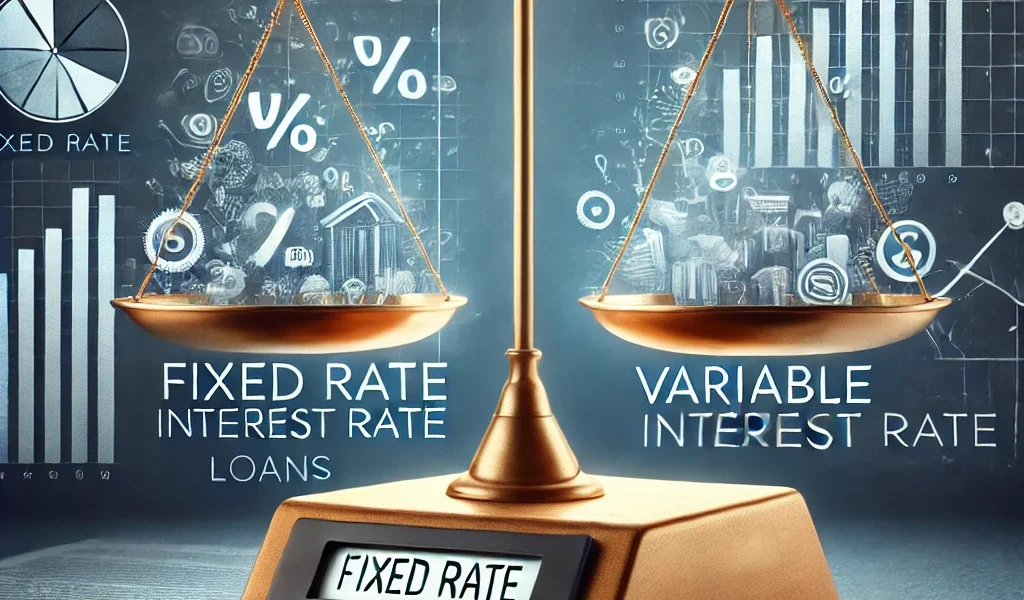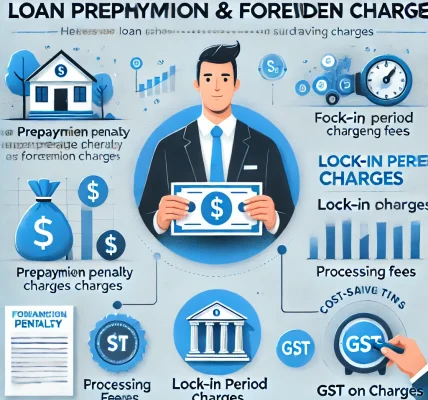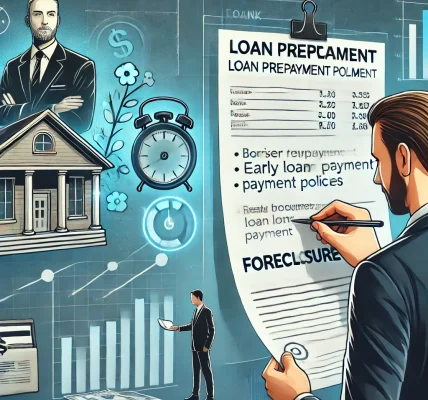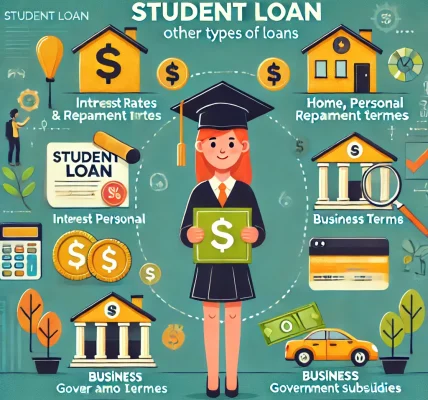Interest rates play a crucial role in loan agreements, directly impacting the total cost of borrowing. When choosing a loan, borrowers often encounter two primary types of interest rates: fixed and variable. Understanding the differences between these rates can help you make informed financial decisions. This guide will explain how fixed and variable interest rates work, their advantages and disadvantages, and how to choose the best option for your needs.
Understanding Fixed Interest Rate Loans
A fixed interest rate loan has a consistent interest rate throughout the entire loan term. This means that your monthly payments remain the same, offering stability and predictability.
Advantages of Fixed Interest Rates
- Predictable Payments: Since the rate remains unchanged, you can accurately budget your monthly payments.
- Protection from Market Fluctuations: Even if interest rates rise in the market, your loan rate stays the same.
- Easier Long-Term Planning: Knowing your exact repayment amount helps with financial planning, especially for long-term loans like mortgages or car loans.
Disadvantages of Fixed Interest Rates
- Higher Initial Rates: Fixed-rate loans often start at a higher rate compared to variable loans.
- Limited Savings Opportunities: If market interest rates decrease, you will not benefit from the lower rates unless you refinance the loan.
- Less Flexibility: Some fixed-rate loans come with prepayment penalties, making it costly to repay the loan early.
Understanding Variable Interest Rate Loans
A variable interest rate loan has an interest rate that fluctuates based on market conditions. These loans are typically tied to an index rate, such as the prime rate or the LIBOR (London Interbank Offered Rate), plus a margin set by the lender.
Advantages of Variable Interest Rates
- Lower Initial Rates: Variable-rate loans often start with lower interest rates, making them more affordable initially.
- Potential for Savings: If market interest rates decrease, your loan’s interest rate may also drop, reducing your monthly payments.
- Short-Term Benefits: For short-term loans, borrowers can take advantage of the lower initial rates before market rates rise.
Disadvantages of Variable Interest Rates
- Uncertain Monthly Payments: As rates fluctuate, so do your monthly payments, making budgeting more challenging.
- Risk of Rate Increases: If market rates rise, your loan interest rate and payments may increase significantly.
- Long-Term Cost Uncertainty: While variable rates may be lower initially, they can become more expensive over time if rates increase.
Fixed vs. Variable Interest Rates: Key Comparisons
| Feature | Fixed Interest Rate | Variable Interest Rate |
|---|---|---|
| Stability | High (rate remains constant) | Low (rate fluctuates) |
| Initial Interest Rate | Higher | Lower |
| Monthly Payment Predictability | Predictable | Unpredictable |
| Market Fluctuation Impact | No impact | Affected by market changes |
| Best for | Long-term stability | Short-term borrowing or risk takers |
How to Choose Between Fixed and Variable Interest Rates
The right interest rate policy depends on your financial situation, risk tolerance, and loan purpose. Here are some factors to consider:
Choose a Fixed Interest Rate Loan If:
- You prefer predictable monthly payments.
- You are taking out a long-term loan (e.g., a 30-year mortgage).
- You want protection against potential interest rate hikes.
- You have a tight budget and cannot handle fluctuating payments.
Choose a Variable Interest Rate Loan If:
- You are comfortable with some level of risk.
- You plan to repay the loan quickly, before interest rates increase.
- You expect market interest rates to decline in the future.
- You want lower initial payments to improve affordability.
When to Refinance Your Loan
Refinancing is an option for borrowers who wish to switch from one type of loan to another. Here are some scenarios when refinancing makes sense:
- Switching from Variable to Fixed: If interest rates are expected to rise significantly, refinancing into a fixed-rate loan can provide stability.
- Switching from Fixed to Variable: If market rates are consistently declining, refinancing into a variable-rate loan may reduce overall costs.
- Lowering Interest Costs: If you qualify for a lower rate due to improved credit or market conditions, refinancing can save you money.
Conclusion
Understanding the difference between fixed and variable interest rate loans is crucial when selecting the right loan policy. Fixed-rate loans offer stability and predictability, making them ideal for long-term commitments. Variable-rate loans, on the other hand, can provide initial savings but come with the risk of fluctuating payments. Assess your financial goals, risk tolerance, and loan term before making a decision. If unsure, consulting with a financial advisor can help ensure you choose the best option for your needs.




